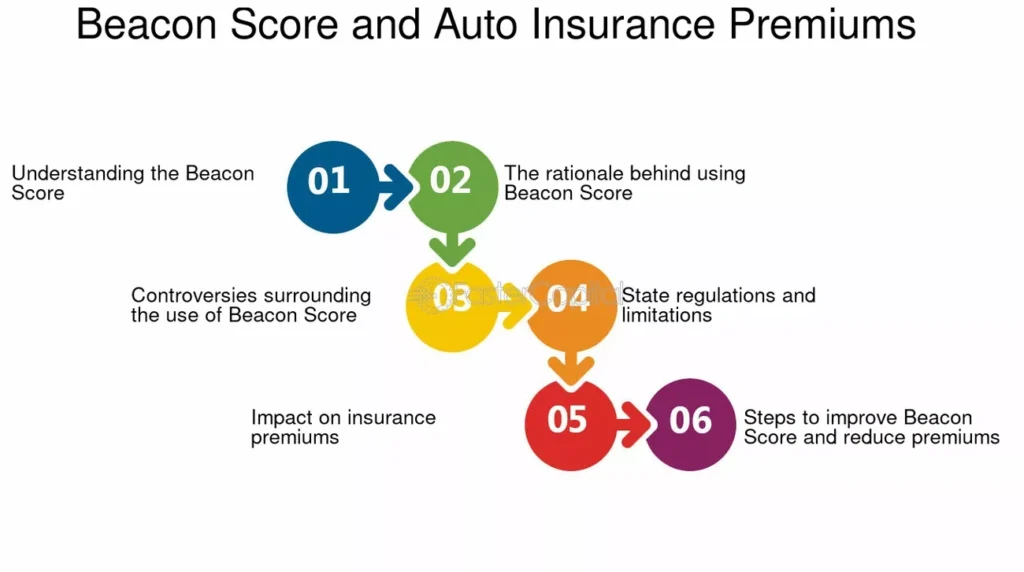image by Freepik
Getting your head around car insurance can feel overwhelming. Most states require vehicle owners to carry specific coverage types. Simple personal auto insurance remains mandatory in most U.S. states. Many drivers don’t realize they could face fines, license suspension, or even jail time if they fail to maintain proper coverage.
Our team found that understanding car insurance coverage isn’t as simple as agents often suggest. Auto insurance actually includes six different coverage types – collision, comprehensive, and liability protection among them. Your agent might skip telling you crucial details about how auto insurance works, from hidden fees to claims processes that impact your wallet.
This detailed guide shows what car insurance really covers. You’ll learn about industry secrets that could save money and protect your interests. The content covers everything from hidden pricing factors to coverage gaps that might leave you exposed.
The Hidden Costs Behind Car Insurance Coverage Explained

Image Source: FasterCapital
Car insurance has a world of hidden costs that most agents won’t tell you about. These concealed expenses play a vital role in making smart decisions about your coverage. The real costs lie beyond the policy terms and coverage limits.
Decoding administrative fees and surcharges
Most drivers don’t know about fees that can raise their premiums by a lot. Monthly payments instead of annual ones come with installment fees that add up quickly. Recent data shows drivers pay an extra $123.40 yearly due to hidden fees. Changes to your policy mid-term trigger adjustment fees, which affect 36% of drivers.
Your premium faces another hit from surcharges. These extra fees kick in after traffic violations or at-fault accidents. They can push your rates up by 40% based on how serious the violation was. These charges stick around on your policy for three to five years.
The truth about ‘loyalty’ pricing increases
Your insurance company rewards loyalty by charging you more money – strange but true. They use complex algorithms in “price optimization” to figure out how much of a price increase you’ll tolerate. Long-term customers see their rates climb even when nothing about their risk has changed.
Two drivers with similar risk profiles can pay rates that differ by 30% just because one shops around. Companies might offer a 10% “loyalty discount” right after hiking your rate by 25%.
How credit scores secretly affect your premiums
Credit scores now influence auto insurance premiums for 92% of insurers. Bad credit means paying 106% more for full coverage compared to excellent credit. All the same, California, Hawaii, Massachusetts, and Michigan don’t allow or limit credit-based pricing.
When bundling policies actually costs more
Bundling home and auto insurance usually saves 10% to 25%, but it’s not always the best deal. Insurance companies often start with higher base rates before applying discounts. Some situations call for separate policies that cost less – like owning an expensive home in wildfire-prone areas.
The best way to know if bundling saves money is to look at total costs rather than just discount percentages.
Coverage Gaps That Leave You Vulnerable
Many drivers feel falsely secure and believe their auto insurance fully protects them in all situations. Your understanding of coverage gaps could mean the difference between financial security and unexpected bills.
The limitations of liability-only policies
Liability-only car insurance exclusively covers what you’re legally responsible for—damage to other people’s property and their medical expenses. Major gaps exist in your protection. You’ll pay all repair costs yourself if your vehicle gets damaged in an at-fault accident. Your own medical expenses remain uncovered if you get injured in a crash you caused. Liability-only policies give zero protection against theft, weather damage, or fallen objects.
Rental car coverage misconceptions
Personal auto policies don’t always extend to rental cars automatically, despite what most drivers think. Of course, many policies include some rental coverage, but protection levels vary substantially. Rental vehicles usually fall under your liability coverage, but damage to the rented car might not be included. On top of that, credit card rental coverage usually provides only secondary protection that applies after your personal policy gets exhausted. Rental agreements often make you liable for expenses like administrative fees, loss of use, and diminished value that your personal policy doesn’t cover.
When your comprehensive coverage isn’t comprehensive
Comprehensive insurance fills gaps that liability and collision coverage leave. The term “comprehensive” can mislead people. This coverage excludes mechanical failures, normal wear and tear, and business-related vehicle use. Your comprehensive insurance won’t cover items stolen from your car—only the vehicle itself and permanently installed features. The coverage helps only with vehicle damage from non-collision events, not your injuries.
The fine print exclusions most drivers miss
Insurance policies have many exclusions that limit your coverage. Important details remain buried in policy language that most people never read:
- Custom parts and modifications need specific listing for coverage
- Coverage becomes void while driving without permission or for business purposes
- Policies generally exclude vehicles with three or fewer wheels
- No coverage exists for intentional acts causing damage or injury
These gaps require your attention to make informed decisions about additional coverage needs.
Insurance Agent Sales Tactics Revealed
Your insurance agent’s recommendations are driven by financial incentives that you rarely see. The business model behind insurance sales reveals why agents promote certain coverage options more than others.
Why agents push certain add-ons
Insurance agents promote add-ons like equipment breakdown coverage, water backup protection, and extended replacement cost options. These recommendations aren’t always based on your needs. Each endorsement or rider increases your premium and the agent’s commission. Insurance companies reward their agents through profit-sharing programs once they hit revenue targets. These add-ons help them reach their goals faster. Some endorsements like scheduled personal property coverage for valuables might be essential for you. Others could be more than what you actually need.
The commission structure behind policy recommendations
Money drives the auto insurance business model. Captive agents who represent just one insurer earn 5-10% commission on first-year premiums and 2-5% on renewals. Independent agents get better deals with around 15% commission on new policies. On top of that, agents receive extra incentives and contingent commissions to help insurers meet business targets. Some agents face conflicts of interest because their financial rewards don’t match what policyholders need.
How fear-based selling influences your decisions
Insurance sales representatives use psychological tactics to drive sales. They might take time to respond to claims or rush settlements before you fully understand your coverage. They know how to use your anxiety about potential risks. Some companies openly use fear in their advertising by highlighting accidents or financial disasters. They ask leading questions that make you doubt your current protection. Agents describe worst-case scenarios to motivate you through fear, especially when selling liability coverage or complete protection options.
How Auto Insurance Claims Really Work
The true test of your car insurance happens when you file a claim. Most policyholders get surprised by the actual claims process that unfolds differently from their expectations.
Why initial settlement offers are usually low
Insurance companies want to maximize profits by paying out less money. Settlement offers at first typically act as negotiation starting points rather than showing your claim’s true value. Adjusters often give low first offers to see if you know what your claim is worth. These companies understand that many claimants face money problems after accidents and might take quick settlements before they fully grasp their coverage or damages.
Documentation tactics that protect your claim
Strong documentation helps your position during the claims process by a lot. The details matter when you document an accident:
- Gather all relevant information including police reports, witness statements, and photographs
- Keep detailed records of medical treatments, expenses, and effects on daily activities
- Preserve repair estimates from reputable shops
- Maintain written communications with your insurer
Insurance adjusters break down claims to set payout amounts. Your claim might get undervalued or denied if you lack complete documentation.
When to accept vs. when to negotiate
You should take an offer that covers all your expenses and matches your claim’s value. Insurance adjusters review many factors like coverage limits, injury extent, property damage, and fault determination.
A counteroffer becomes necessary when the first offer falls short. Your documentation should support why the settlement doesn’t work. Ask for a written explanation of low offers and respond with specific reasons for the insufficient amount. Note that most personal injury cases end in settlement—the question is just timing and amount.
The appeals process most drivers don’t know about
Insurance carriers have internal appeal systems for policyholders who feel decisions were wrong or unfair. Starting an appeal needs you to notify your insurance company and contact your assigned agent. Your evidence should clearly show how it contradicts their decision.
The state’s insurance department can receive your complaint if your appeal gets denied. Insurance companies can reverse claim denials, and with good reason too. Legal representation helps with complex appeals because attorneys are skilled at challenging insurance company decisions.
Conclusion
Car insurance knowledge extends way beyond the reach and influence of simple coverage requirements. Our detailed analysis reveals critical information that most agents stay quiet about. Knowledge about hidden fees, coverage limitations, sales tactics, and claims processes helps drivers make better decisions about their insurance needs.
You can make smart insurance choices only when we are willing to accept that loyalty rarely pays off. Your careful evaluation of policy details helps avoid coverage gaps that can get pricey. Claims require proper documentation, and strong negotiation tactics help you retain control when dealing with adjusters.
Note that insurance decisions impact your financial well-being directly. Research about coverage options, questions about add-ons, and proper record-keeping benefits you – especially during claims. Agents might not volunteer this information, but your knowledge about these lesser-known aspects of car insurance protects your vehicle and wallet effectively.
More on Afripati


